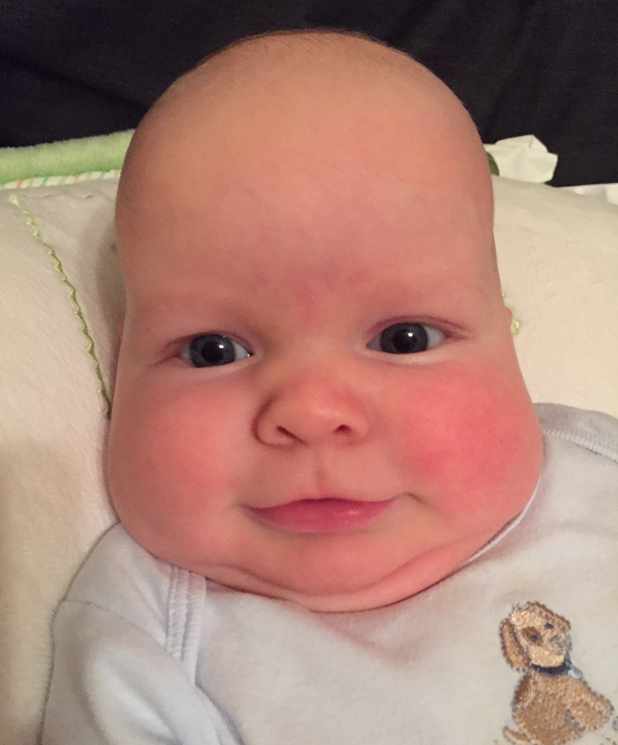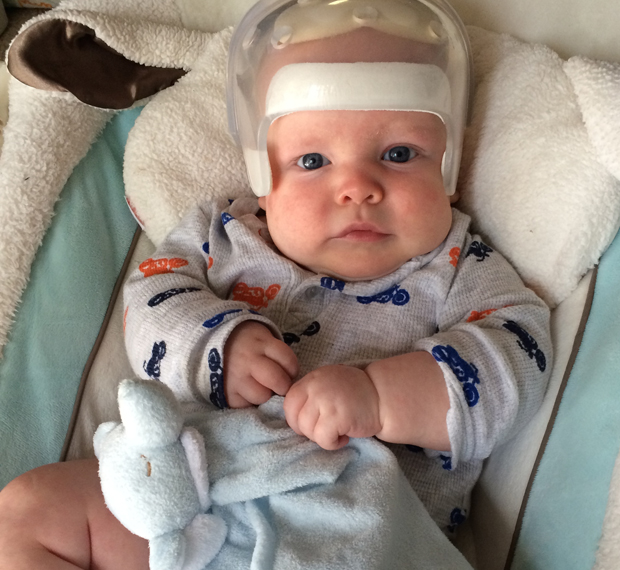Baby's odd head shape signaled serious medical condition
When Megan Boler gave birth to her second child, Matthew, almost a year ago, she noticed the shape of his head was a bit off. He looked so much like his older sister, except while her head was large and round, Matthew's was long and skinny.
Boler and her husband Michael commented about it but didn't think much of it. But at Matthew's two-month doctor's visit, the family got some very upsetting news: Matthew's oddly-shaped head was a sign of craniosynostosis, a serious condition that prevents a baby's brain from growing normally.
"I was completely shocked and overwhelmed," Boler told CBS News. "It felt like the world stopped for a moment. When the doctor said 'craniosynostosis,' that word in itself is very scary."
Craniosynostosis is a birth defect in which one or more of the joints, or sutures, between the bones of a baby's skull prematurely fuse together.
"A normal baby's skull is made up of different plates of bones and so the different bony plates come together at these seams, or sutures," Matthew's doctor Sandi K. Lam, M.D., Director of Craniofacial Surgery Program at Texas Children's Hospital, explained. "They're open when the baby is born to allow the brain to grow. Over the first two years in life, there's a lot of rapid brain growth, and if any of the sutures are fused at that time, it doesn't allow the brain and skull to grow properly."
The condition occurs in about one in 2,000 births. Some children may experience high pressure in the brain, which can lead to headaches, developmental delay, and eye problems.
Soon after Boler received the news, Matthew was officially diagnosed with craniosynostosis and underwent corrective surgery. The procedure involved two incisions on his head to remove the section of the bone along the suture. That created a new large soft spot that would allow his head to grow sideways.
After a difficult first 72 hours of recovery, when Matthew's head was so swollen he was almost unrecognizable, he began smiling and eating again.
The swelling went down, and a week later, Matthew started wearing a helmet 23 hours a day to help heal and guide the reshaping of his head. While this presented some challenges for Boler, including difficulty dressing and breastfeeding him, Matthew took it in stride and barely seemed to notice it, she said.
Four months later, Boler could take the helmet off Matthew for good. Today, he is a healthy 11-month-old baby. "He's happy-go-lucky and super cheerful," she said. "He loves people and loves to laugh and to talk. Most people when they meet him have no idea what he's been through."
Boler is sharing her story to spread awareness and alert other parents to the condition. "If there's a family out there who's looking at their baby and is concerned about the shape of his head, we want them to know that they should ask their doctor to get their child evaluated," she said.



